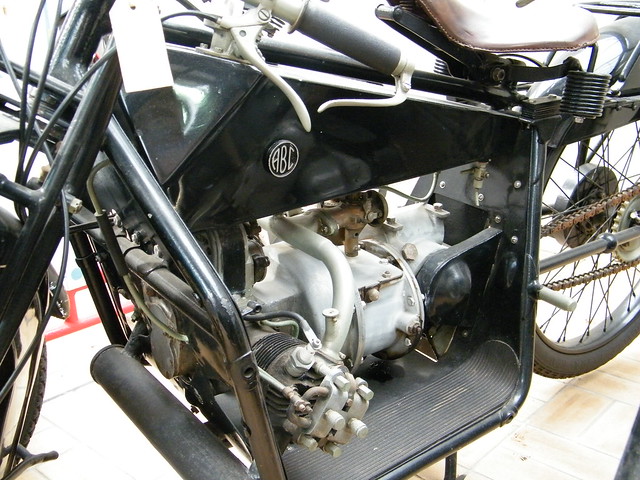


An article entitled, "The ABC Motor Cycle. A New Development", written by Alvin Higgins, appears in 'Motor Cycle' magazine's December 19th, 1918 issue.
Produced between 1919 and 1925, the ABC 400 had a 398cc horizontally opposed flat twin-cylinder overhead-valve four-stroke motor* with a four-speed tranny. Fitted with Claudel-Hobsob carburetor, it was capable of a top speed of over 70 mph.
Founded in 1912 by Ronald 'Ronnie' Charteris, it was originally called Tthe All British Engine Company Ltd. of London. The company changed it's name to ABC Motors LTD. in 1914, then along with his friend and chief engineer Granville Bradshaw, they built a wide-range of engines throughout the First World War.
ABC had always had a close association with the Sopwith aircraft company, which included producing the famous Sopwith Camel. In December, 1918, ABC transferred the rights for manufacturing and selling motorcycles to Sopwith Aviation Co. Ltd. This would allow Bradshaw to focus on his designs. In 1919 they co-exhibited the Sopwith 390cc horizontally opposed twin-cylinder overhead valve machine at the annual 'Motor Cycle' show. It was the talk of the show with it's innovative front and rear leaf springs and "expanding" brakes, wet sump lubrication and a four-speed transmission. It was also one of the first motorcycles with a duplex cradle frame. Curiously, it had no starting mechanism (hello, Granville?!), the rider actually had to jump start the engine to get going. The ABC 400 was made under license by the Sopwith Aviation & Engineering Co. in Kingston-upon-Thames and 2,200 were produced. Later models had improved valve gear, speedometers, and electric lighting. And a kick-starter.
*Several years later BMW adapted the design. Bradshaw challenged BMW's use of his patented design in 1926.
Today in motorcycle history proudly supports the National Association for Bikers with a Disability (NABD). www.nabd.org.uk